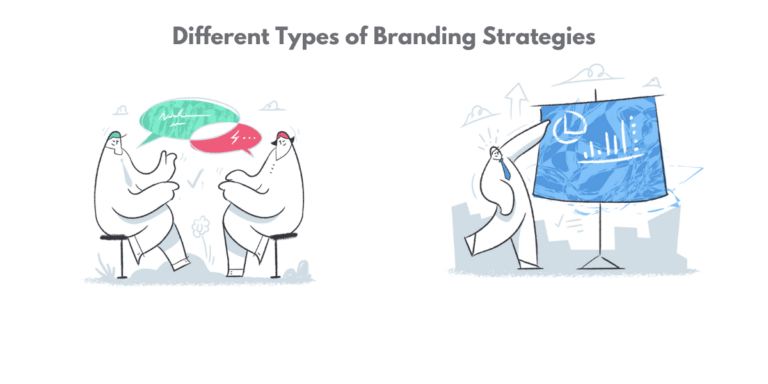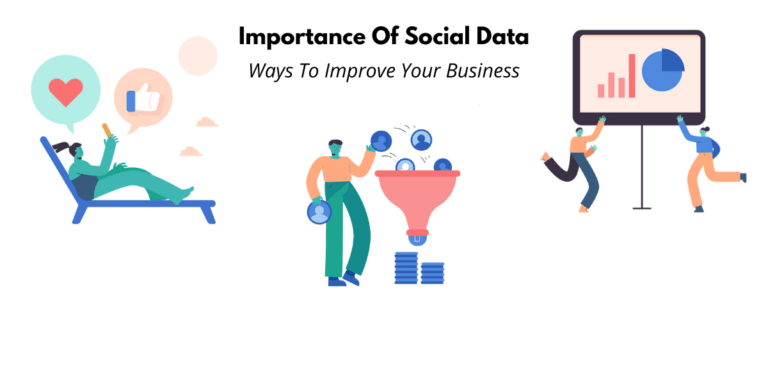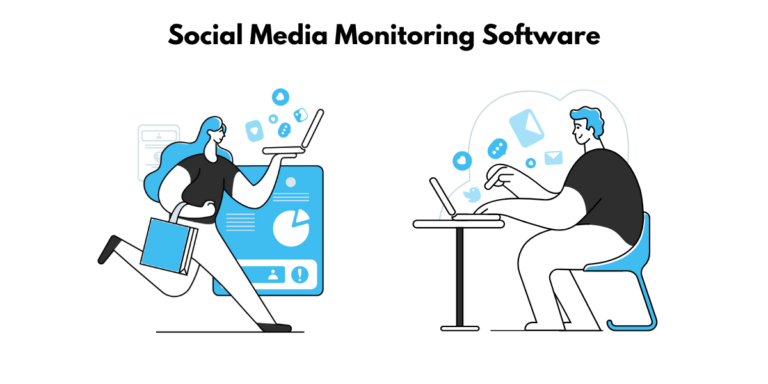Trend Tracker: 10 benefits of tracking trends
What is a trend tracker?
Trend tracking is a process used to monitor and analyze data to spot trends and make predictions.
It is a way of collecting and analyzing large amounts of data over time to assess an organization’s performance and identify areas for improvement.
Trend tracking involves collecting data from multiple sources, such as customer feedback, company reports, market research, and competitor analysis.
Once collected, the data is analyzed to identify patterns, correlations, and trends.
This analysis allows organizations to identify areas of opportunity and to create action plans to capitalize on the insights gained.
Trend tracking can help organizations understand how their performance compares to their competitors, how customer satisfaction changes, and how their services can be improved.
What are the benefits of trend tracking?
Tracking trends is beneficial as it provides insight into how an organization performs compared to its peers.
Using trend trackers, organizations can access a data check to compare their quality and performance metrics with their competitors.
This allows organizations to identify areas for improvement, benchmark their progress, and build partnerships with other providers.
Additionally, with trend tracker technology, administrators can quickly and easily capture, analyze, and share classroom walk-through data to compare and understand what is happening in schools nationwide.
This allows them to make timely and informed decisions to optimize classroom performance.
1. Improved awareness of changing needs
Trend tracking can improve awareness of changing needs by providing access to data insights that can help executives make better strategic decisions.
With the help of research-based technology, executives can monitor emerging trends, analyze changes in their sector and get AI-driven trend predictions.
This can help them stay up to date 24/7 and understand the changes in consumer behavior and the evolution of the market.
By tracking trends, executives can better understand the cultural and technological shifts driving changes in consumer needs, enabling them to anticipate better and respond to changing demands.
Additionally, trend tracking can help executives identify emerging opportunities and develop strategies for capitalizing on new trends, which can help their organizations remain competitive and stay ahead of the curve.

2. Increased ability to adapt
Trend tracking helps executives to analyze current trends and better anticipate future trends, allowing them to make informed decisions that allow them to adapt to changes in the market.
By anticipating changes, companies can adjust their strategies to stay ahead of the curve and capitalize on new opportunities.
Trend tracking can also provide insights into customer behavior, giving executives a better understanding of their target audience and the markets in which they operate.
This understanding enables businesses to respond quickly to new trends and trends in the making, ensuring that their strategies are always up-to-date and relevant.
3. Enhanced ability to achieve higher quality standards
Trend tracking can help organizations identify improvement areas and set performance targets to achieve higher quality standards.
This research-based technology enables organizations to understand the effectiveness of their quality initiatives while also allowing them to set and track goals and measure progress over time.
With this data, organizations can demonstrate their commitment to quality to their patients and residents, leading to tangible, verifiable results.
4. Improved ability to allocate resources effectively
Trend tracking can improve the ability to allocate resources effectively by providing district leaders, building administrators, and other stakeholders with deep insights into the underlying trends affecting student outcomes, teacher effectiveness, and school operations.
With predictive AI and dynamic AI network clustering, stakeholders can monitor, analyze and stay up to date with emerging trends to identify areas that need to be addressed for improvement.
By accessing this data, stakeholders can make better informed strategic decisions and be more decisive in optimizing their education system, thus allocating resources more effectively.
5. Greater ability to predict future needs
Trend tracking helps to predict future needs by providing insightful data and AI-driven trend predictions.
Proprietary NLP algorithms identify emerging trends, giving companies the data insights they need to stay ahead of the competition and make better strategic decisions.
Trend tracking helps companies monitor sector changes, discover new opportunities, and anticipate customer needs.
It also helps them to recognize cultural shifts and develop new products and services to meet changing consumer demands.
By tracking trends, companies can understand and respond to shifts in their sector and adapt to new markets, staying ahead of the curve and increasing their competitive edge.

6. Increased ability to engage with stakeholders
Trend tracking helps engage stakeholders by providing them with up-to-date insights on emerging trends and changes in their industry, enabling them to make better strategic decisions and stay current on the latest developments.
With the help of proprietary NLP algorithms and AI network clustering, trend tracking solutions deliver data-driven insights that provide stakeholders with an understanding of the convergence and interlinking of trends.
By giving stakeholders access to trend boards, insights, and news, they can stay informed of the latest trends and establish connections, allowing them to understand the industry better and engage with stakeholders more effectively.
7. Improved ability to connect with the community
Trend tracking can improve the ability to connect with the community by allowing individuals to gain insight into the latest ideas, news, and trends to inform their decisions, create innovative solutions, and stay up-to-date with the latest developments.
By leveraging the power of data-driven insights, trend tracking provides users with a comprehensive overview of the macro-trends and their implications.
This can help individuals identify emerging trends and connect with their peers to understand the current climate better.
With trend tracking, individuals can stay ahead of the curve and stay connected to their community to stay informed and engaged.
8. Increased capacity to develop innovative solutions
Trend tracking enables strategic decision-makers to better understand the ever-evolving trends in their industry, allowing them to make informed decisions and develop innovative solutions.
By leveraging the power of research-based technology to identify trends, companies can access valuable insights on the materialization of innovation and understand how trends impact their industry.
This data can be used to make more strategic decisions and develop effective solutions to challenge the status quo.
Furthermore, proprietary NLP algorithms can identify emerging trends that might otherwise remain obscured, providing companies with an edge in innovating and staying ahead of the competition.
In short, trend tracking is essential for effective and innovative problem-solving and can provide companies with the data insights they need to make better strategic decisions.
9. Greater ability to increase efficiency
Trend tracking can help increase efficiency by providing stakeholders with the data insights needed to make better strategic decisions.
By using research-based technology to identify trends, businesses can stay up to date 24/7 and have access to relevant insights and news at their fingertips.
With dynamic AI network clustering built in, companies can understand the convergence and interlinking of trends, putting them into context and grouping them into personalized trend boards.
Furthermore, trend tracking can help businesses understand consumer macro trends and how they have morphed into one another, providing valuable information on tomorrow’s Google topics.
As such, trend tracking can help businesses stay ahead of the competition, anticipate consumer needs, refresh and update their menus to increase upsells, build customer loyalty, and strengthen their brand.
10. Improved capacity to maintain a competitive advantage
Trend tracking helps businesses maintain a competitive edge by providing predictive AI analytics that accurately scores trends on their projected strength and effective time horizon.
This allows businesses to identify emerging trends quickly, so they can pivot their strategies to stay one step ahead of the competition.
Additionally, trend tracking leverages natural language processing algorithms to identify every potential trend so businesses are never caught off guard.
It also enables companies to monitor their industry and region-specific trends and helps them understand how other companies incorporate trends into their operating models.
Finally, by using dynamic AI network clustering, businesses can better understand how trends are connected and contextualize them for their needs.
These features give businesses a competitive advantage, as they can make informed decisions tailored to their specific industry and region.

What are the steps in trend tracking?
Trend tracking is a powerful tool for analyzing data and making decisions.
It allows users to create easy-to-read charts and graphs that display historical data from grantmakers, providing invaluable insight into grantmaking trends.
Trend tracking is a simple and intuitive process and can be done in just a few steps.
Step 1: Research trends
It is important to research trends to stay up-to-date and ahead of the curve in your industry.
A trend tracker provides valuable insights into your organization’s performance over time about your peers.
This allows you to benchmark and proactively adjust your strategies to meet market demands.
Additionally, with a trend tracker’s AI-driven trend predictions, you can stay ahead of the game and make informed decisions based on data-driven insights.
By researching trends, you can gain an edge over your competitors and ensure your organization is well-positioned in its industry.
Step 2: Choose the right trends
Choosing the right trends to stay up-to-date with the constantly changing market and customer needs is important.
Trends represent the direction in which the market is heading and can be used to inform business decisions, product development and innovation, marketing campaigns, customer experience, and more.
By keeping an eye on the latest trends and understanding how they are evolving, businesses can stay ahead of the competition and remain relevant to their customer base.
Additionally, trends can provide valuable insights into the customer journey, allowing businesses to understand what they are looking for and how they interact with their products and services.
Step 3: Create an action plan for your approach to the trend
An action plan for approaching a trend is important to ensure that resources are targeted at the right area to address the issue effectively.
With trend tracker technology, administrators can compare data to identify the areas requiring the most attention.
This data can then create an action plan tailored to specific needs.
With the help of the AI-driven strategic intelligence platform trend tracker, businesses can also receive a regular overview of all the relevant trend insights they need to make informed decisions.
An action plan based on data and trend insights allows businesses to have a competitive advantage and make strategic decisions backed by data.
Step 4: Monitor progress and adjust strategy accordingly
Monitoring progress and adjusting strategy to stay competitive in today’s long-term and post-acute care market is important.
Using a trend tracker, providers can benchmark their performance against their peers and identify areas to target for improvement.
Step 5: Measure the success
Measuring the success of a trend tracking campaign is essential in understanding the impact of your strategies and ensuring your organization is improving.
Here are the steps you can take to evaluate the success of your campaign:
- Set measurable goals: Establish performance targets you wish to reach and track over time. This will help you measure your progress and help you identify any areas of improvement.
- Use the right tools: Leverage data-driven tools to analyze your progress and assess how your organization is trending compared to your peers.
- Monitor data: Regularly monitor your data across reports to ensure that you’re making progress and staying on track. Use intuitive charts and graphics to track your performance over time.
- Analyze the data: Analyze the data to identify areas of improvement and set performance targets.
- Share the results: Share your results with leadership and stakeholders.
By following these steps, you can measure the success of your trend tracking campaign and ensure your organization is progressing and improving continuously.
Step 6: Cite research in presentations and publications
Citing research to track trends in presentations and publications can be incredibly useful for staying informed and current on the latest life science developments.
To do so, use credible sources, these will provide you with the latest news and resources regarding life science developments.
Next, use research-based technology to identify relevant trends and develop data-driven insights.
This can include analyzing existing data sources, creating surveys and polls, and conducting interviews or focus groups.
Finally, cite your sources correctly when presenting information in presentations or publications.
This includes providing the publication title, author name, date of publication, and URL, if available.
Proper citing of sources gives credit to the original authors and helps verify the data’s accuracy and validity.
- 15 Best Social Media Monitoring Software of [2023] - July 5, 2023
- Trend Tracker: 10 benefits of tracking trends - April 14, 2023
- Does Social Media Affect Seo: How are search engines and social signals related? - October 22, 2022





